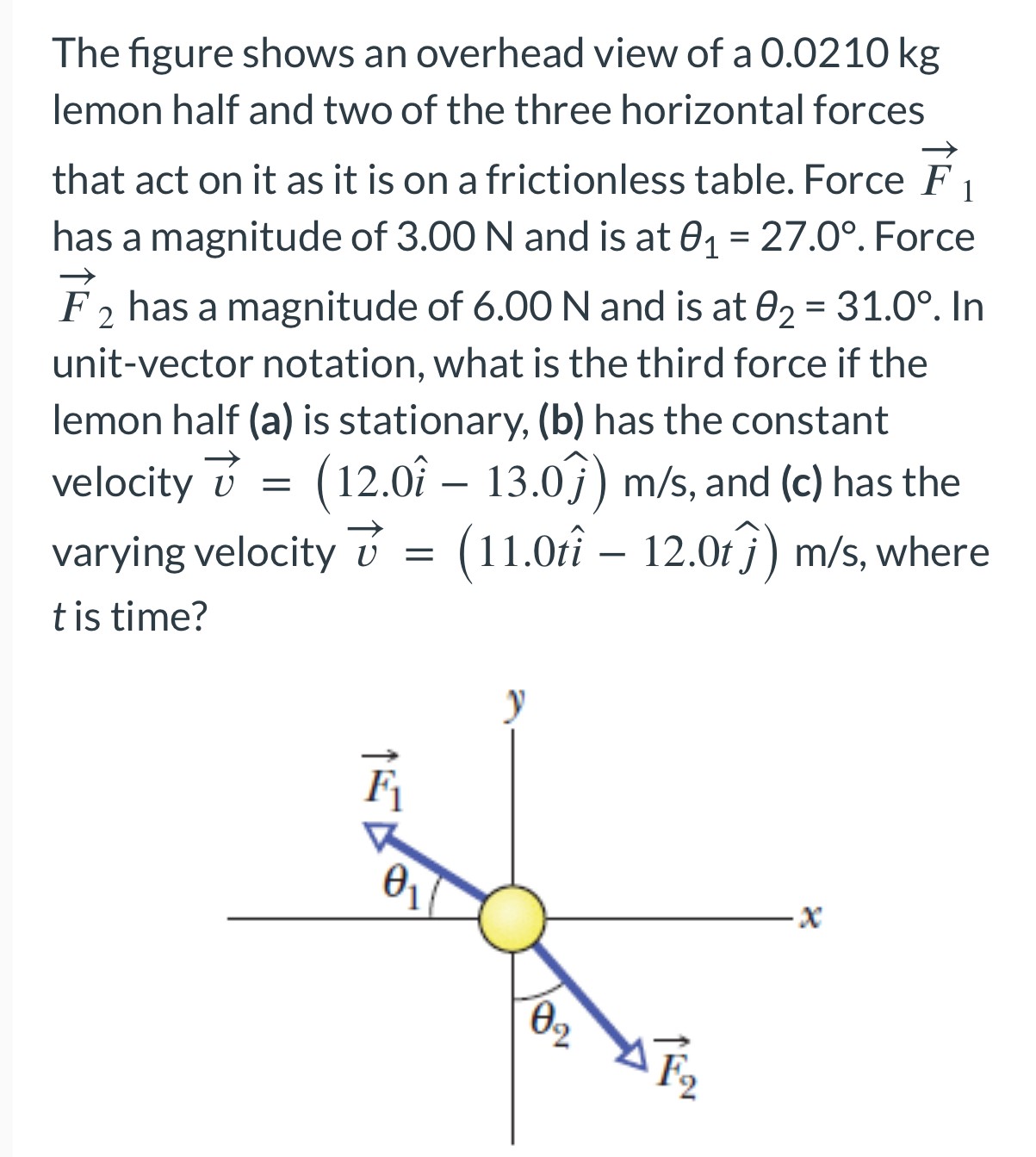The figure shows an overhead view of a 0.0210 kg lemon half and two of the three horizontal forces that act on it as it is on a frictionless table. Force F→1 has a magnitude of 3.00 N and is at θ1 = 27.0∘. Force F→2 has a magnitude of 6.00 N and is at θ2 = 31.0∘. In unit-vector notation, what is the third force if the lemon half (a) is stationary, (b) has the constant velocity v→ = (12.0i^ − 13.0j^) m/s, and (c) has the varying velocity v→ = (11.0ti^ − 12.0tj^) m/s, where t is time?



You'll get a detailed, step-by-step and expert verified solution.
 Work With Experts to Reach at Correct Answers
Work With Experts to Reach at Correct Answers